This photo of an American sycamore was shot yesterday, the last day of winter, 2023. I was between the two Sunday events of taking my mom to church and walking with a friend. Making the drive from Plymouth to Oak Park, I was listening to “The Problem with Ghosts,” a recent episode of This American Life.
Shortcut with a Stop
I was so absorbed in the podcast, I inadvertently turned on a later mile road and then onto Greenfield instead of Coolidge. I ended up shortcutting through a neighborhood I hadn’t been in for a long time. I turned at an intersection and suddenly, a full block away, looming up all silvery white in the afternoon light, was this tree. Almost like seeing a ghost it was. I started passing this beauty by, but then, at the last minute, stopped, parked, and got out of my car.
A Member of the Family
Some neighborhoods in Oak Park, Michigan, have sycamores planted as street trees. You know, those trees planted on the park lawns, the lawn between the sidewalk and curb. But, you’ll notice, this sycamore is growing in the front yard proper, on the house side of the sidewalk. A homeowner or a family–not the city–chose this tree to mark their house. I felt the urge to go up the steps to the front door, ring the doorbell, and find out if the people living there now knew who’d picked that tree and why, and how the current residents felt about sharing their yard with this majestic tree. I wanted to hear their stories about this particular sycamore.
Stairway to Heaven
I think of the sycamore in my front yard as an ally. I chose it as the subject of one of the first tree stories I wrote in Divining in an essay titled “Stairway to Heaven.” When we moved to this house, my ally here had 12 steps on their trunk. (Consider how the pronoun “their” works particularly well for monoecious trees, those trees with both male and female reproductive organs.) And, yes, the song “Stairway to Heaven” evokes a particular memory of my college years.
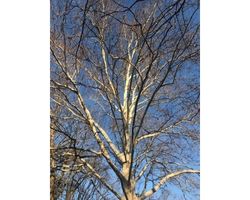
in 2019
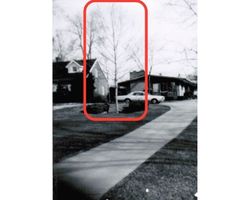
When Julia Fletcher, one of Royal Oak’s city assessors, came to inspect an addition we’d built onto our house in 2019, her file bearing our address held several old pictures of our house glued atop one another. Steam and patience separated the decades.
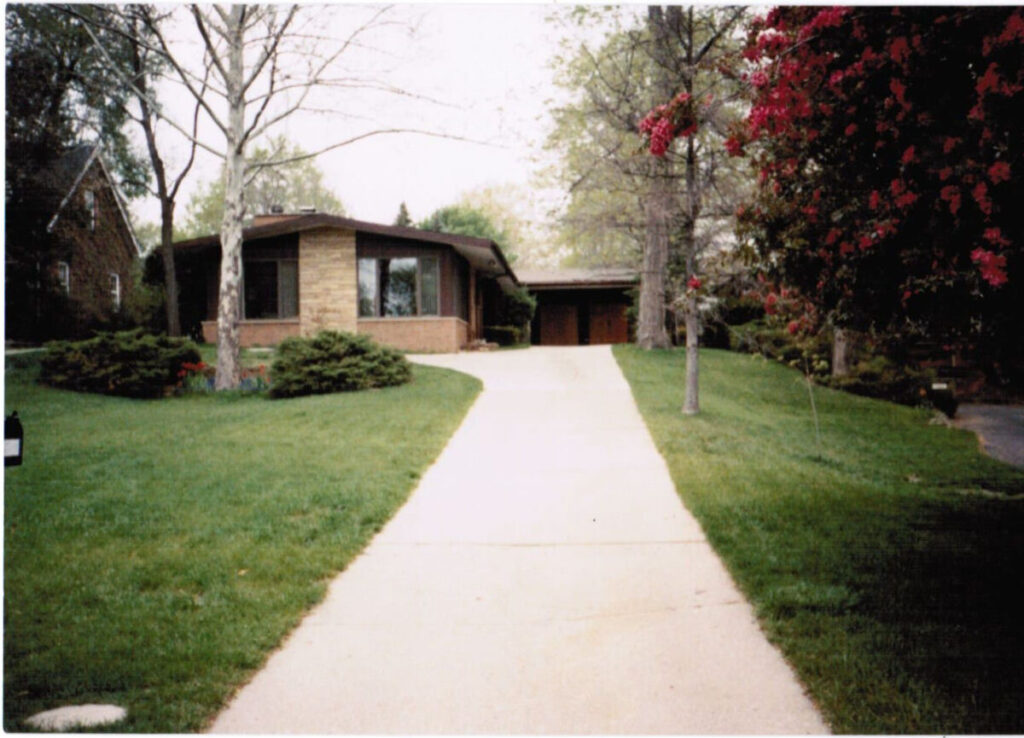
Sycamore Traits
Why are sycamores known as the “Ghosts of the River”?
The name “Ghosts of the River” comes from the fact that sycamores–who often choose riverbanks upon which to grow and usually have upper branches that reach high above the neighboring species of trees–present arms that glow white in the winter light, once they’ve dropped their leaves and as they shed their bark. Sycamores in winter are a very visible way to trace the course of a river.
https://maureendunphy.com/wp-content/uploads/2023/02/Chapter-2-American-Sycamore.pdf
Have you ever seen sycamores lining the bank of a river from a higher elevation? Something special to be on the lookout for in areas of hills and valleys, like Ann Arbor.
A Cache of More Sycamore Info
Do you know why sycamores shed their bark? If you’d like to know this and some other interesting bits about American sycamore trees, I’ve put the original chapter features that surrounded my essay “Stairway to Heaven” here.
Speaking of a “cache,” in the past, black bears, chimney swifts, and the original European settlers took advantage of sycamores, hollowed out by age. Sycamores usually live for 200 to 250 years, but they have been known to live for 500 to 600 years.
Happy Ghost Hunting
Sycamores are some of the last trees to get their leaves come spring. Once a sycamore leafs out, some of its leaves, which vaguely resemble maple leaves in shape, can be as large as salad plates. Its white arms are concealed behind green.
Yes, it’s finally spring–officially this evening–but you’ve got maybe another month to spot some ghosts of the river for yourself.


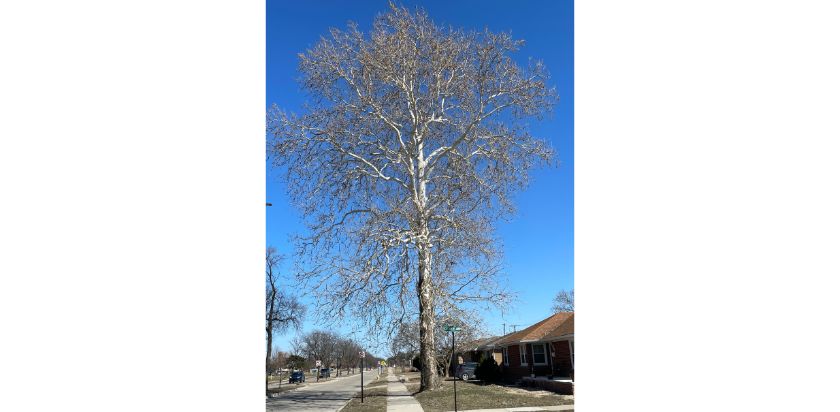

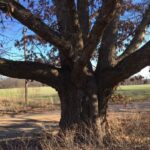


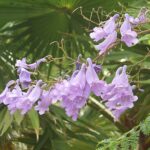

What a wonderful photo and interesting blog post! I’m feeling a bit haunted. For many years, our family had a mature sycamore in our back yard. We got to know it well – the last of our trees to get its leaves in the Spring, and the last to shed them in the Fall. Its jumbo leaves and strips of its bark were regular features on our deck. A handsome, quirky part of the family, but one that our next door neighbors did not appreciate. All that remains now of it is a large stump (and perhaps its ghost). Successive trimmings to please the neighbor and finally some storm damage did it in. Your info, Maureen, about how long sycamores can live, and the memory of how graceful they can be shook me up some, to be honest. But such a great read!
Thanks for sharing your tree story, Tim! “Quirky” is the perfect word for a sycamore. Happy to hear you got to grow up with one; I’m sorry it’s gone. The sycamore with whom I share this piece of Earth is what my eyes trace when I’m at my desk thinking, so I’d say we’re pretty close.
Glad you enjoyed the sycamores, Mindy. I was thinking maybe we’ll meet under the one in my yard for a book discussion this summer. It does throw some great shade!
Just love that you stopped, parked and got out of your car for … a tree! Great post.
Oh, dear, guess I’d best not let the world know how often I do stop for a tree 😉 Thanks, Jen!